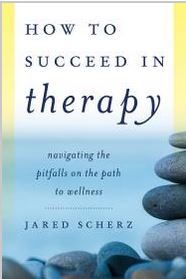 I was at my annual exam last week and anxiously reviewing my family’s cancer history with my doctor. My mother and her sister each died from cancers and I knew that put me at a higher risk. My doctor reviewed my history and noted my regular screenings over the past 10 years. She applauded my commitment to regular screenings and exams but then said “You know, what you really should be worrying about is heart disease.” This was her gentle way of reminding me that I’ve been saying I should lose weight for the past 10 years.
I was at my annual exam last week and anxiously reviewing my family’s cancer history with my doctor. My mother and her sister each died from cancers and I knew that put me at a higher risk. My doctor reviewed my history and noted my regular screenings over the past 10 years. She applauded my commitment to regular screenings and exams but then said “You know, what you really should be worrying about is heart disease.” This was her gentle way of reminding me that I’ve been saying I should lose weight for the past 10 years.
According to the American Heart Association, heart disease is the number one killer of women, killing half a million American women a year. And yet, according to a study by the Mayo Institute, only 8% of women see heart disease as a serious risk to their health. The news isn’t any rosier for men. The risk of stroke and arterial disease has increased by 24% in the past 10 years and the danger is climbing for young people as well. In another study published by the American Heart Association, researchers found that the risk of hypertension in children and teens rose 27% over a 13 year period. Hypertension can lead to stroke and heart disease.
News about the benefits of exercise and healthy eating are not new. Talk of fitness is as ubiquitous as ever. My gym is packed this month with people making good on their New Year’s resolutions. I have apps on my phone to track exercise, calories, carbohydrates and sugars. My friends with FitBits can print out hourly reports of their health. With all the information and research available to us at our fingertips, how is it that heart disease continues to rise?
We don’t get enough exercise
Fifty years ago jobs were more active, enabling us to move throughout the day. Active jobs now make up less than 20% of our workforce and we’re working longer hours. On average, full-time workers spend about 47 hours a week working, that’s more than 350 extra more sedentary hours worked each year. Since the passage of No Child Left Behind in 2001, schools have struggled to make time for more rigorous instruction and testing and cuts to recess and physical education have become common solutions, meaning that our children are spending more time sitting. The American Heart Association recommends at least 30 minutes of moderate activity at least 5 days a week or 25 minutes of vigorous activity at least 3 days a week for improved cardiovascular strength. There are days I can’t imagine finding five minutes for myself, carving out 30 can feel nearly impossible.
Too much of the bad stuff
Processed and refined sugar, excessive sodium and trans fats are the chief threats to our heart health, and they are in nearly everything we eat. I was shocked to learn that despite carefully cutting snacks and candies from my diet I was still consuming sugars at a dangerous rate. Eighty percent of our food products now contain refined sugar and are hidden under at least 57 different names, my favorite being ‘dehydrated cane juice’ – does that fool anyone?
Processed packaged and restaurant foods are to blame for 80% of our sodium intake. Current dietary guidelines call for no more than one teaspoon of salt a day. By the year 2000, we were eating nearly three times that amount.
The effort to reduce or eliminate trans-fats has been making strides with some cities banning their use. However, despite labels that claim ‘no trans-fat’, in a study of 4.340 top selling packaged foods bearing this claim, researchers found that 9% still contained the main source of trans fat, partially hydrogenated oils.
Not enough of the good stuff
With hidden ingredients, code names for refined sugars and blatant misrepresentation of fat content, what’s a gal supposed to do to eat better?? Well, let’s keep it real. Real food, that is. Fruits and vegetables. Turns out only about 26% of adults in this country eat their veggies three times a day. Vegetables are expensive, inconvenient and not equally available in all communities. I have a weekly ritual right now that involves throwing out half the produce I bought on Sunday while promising to do better next week. The large leaf lettuce that was going to house veggie wraps looks like my son’s science project and who knew a red pepper could completely liquefy??!
There is encouragement. Farmers markets are increasingly allowing shoppers to use food stamps to buy fresh, local produce, many cities support urban gardens in vacant lots and nearly every state now has programs to send fresh vegetables into poorer schools and neighborhoods. Some food companies are trying to market baby carrots, edamame and other small fruits and veggies as snack food. But as a mother who was raised on an old food pyramid that emphasized meats and breads and clearing one’s plate, it’s still hard for me to feel I am feeding my child well when his plate is half-filled with veggies.
We’re still lighting up
“Nobody smokes anymore!” my teenage clients tell me and statistics seem to bear out their claim. Only about 20% of Americans smoke now as compared to 40% 15 years ago. But that’s still about 40 million people lighting up. Smoking decreases good cholesterol, increases blood pressure and accelerates the risks of obesity and other heart health risks.
Research is mixed on whether the advent of e-cigarettes offers smokers a heart-safe way to enjoy nicotine. Inhaling smoke weakens the cardiovascular system. E-cigarettes deliver the nicotine without the tar and smoke of traditional cigarettes but there still may be risks. Nicotine is known to constrict blood vessels which may compromise heart health. And the solvents used in e-cigarettes to break down the nicotine are still being studied and tested to determine their risks.
February is Heart Health Month
So why not take the opportunity to learn a little more about how to protect yours? Here are some ways to start caring for your health and that of your loved ones.
- Films to educate: Why not make a movie night to view one of these films as a family or with your friends? Fed Up uncovers the risks of sugar consumption. Super Size Me looks at fast food consumption and Forks over Knives makes the whole food, plant-based diet accessible and compelling.
- Try a Smoothie Challenge: Smoothies can be quick, easy and tasty ways to get your servings of vegetables and fruits. The Simple Green Smoothies 30 day challenge offers affordable and easy recipes that can be made in your blender. http://simplegreensmoothies.com/30-day-challenge
- Involve your loved ones: This is the month to celebrate love and what could show your valentines you care more than focusing on heart health, yours and theirs? Making change is easier with support. Start a Facebook group to keep yourselves accountable to each other for exercising and eating well. Join an online community focused on healthy living. Ask your spouse or partner to join you in your efforts.
Your heart beats about 100,000 times a day and 35 million times in a year. Isn’t it time to do something good for it in return?
 I am having a food memory. I am remembering every detail of what it was I ate, how it tasted and felt in my mouth and where I was when I ate it. And the memory is almost 15 years old. I’m not remembering a fancy French dish served on a romantic holiday or the first plate of spaghetti I shared with a date. I am remembering a cool, crisp Gala apple eaten after my first grueling hike through the Cascade mountains in Washington State. This particular apple memory stays with me because it was one of the few times in my life that I was aware of eating food as fuel. I could feel it immediately restoring me and I remember being fully satisfied after it was finished. I was more than 30 years old!
I am having a food memory. I am remembering every detail of what it was I ate, how it tasted and felt in my mouth and where I was when I ate it. And the memory is almost 15 years old. I’m not remembering a fancy French dish served on a romantic holiday or the first plate of spaghetti I shared with a date. I am remembering a cool, crisp Gala apple eaten after my first grueling hike through the Cascade mountains in Washington State. This particular apple memory stays with me because it was one of the few times in my life that I was aware of eating food as fuel. I could feel it immediately restoring me and I remember being fully satisfied after it was finished. I was more than 30 years old!






